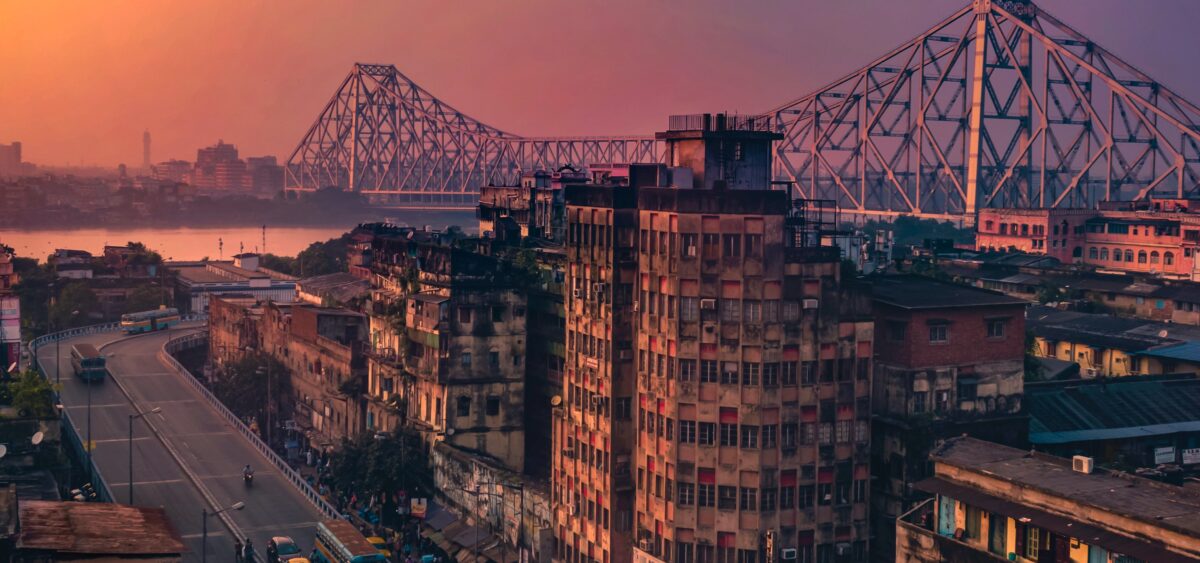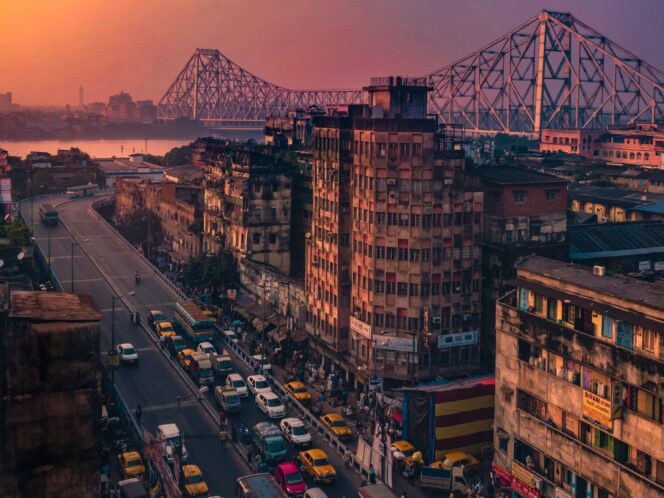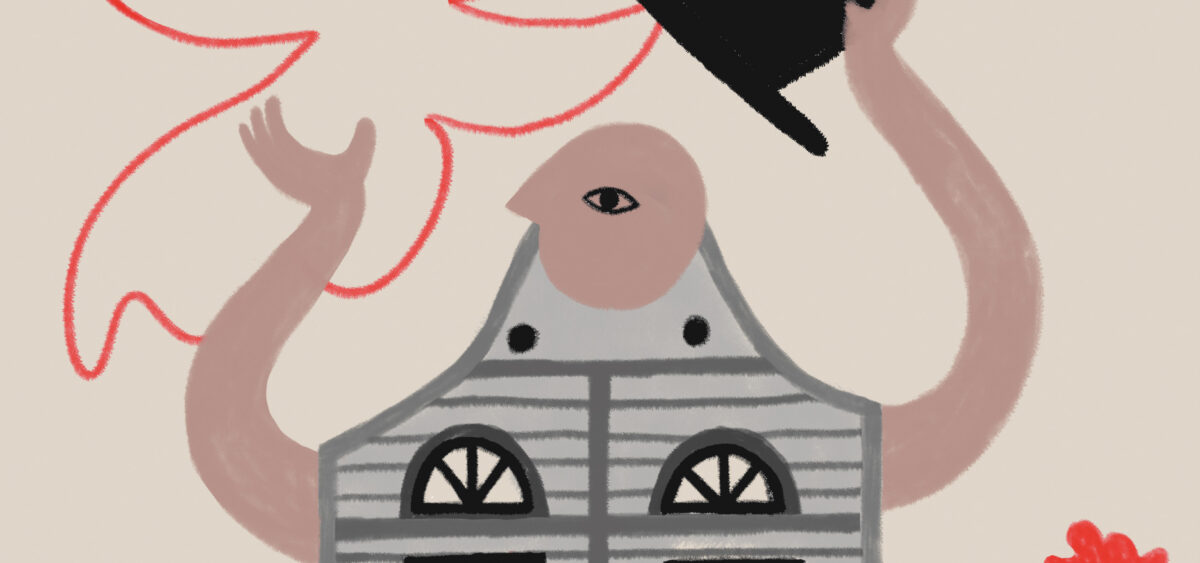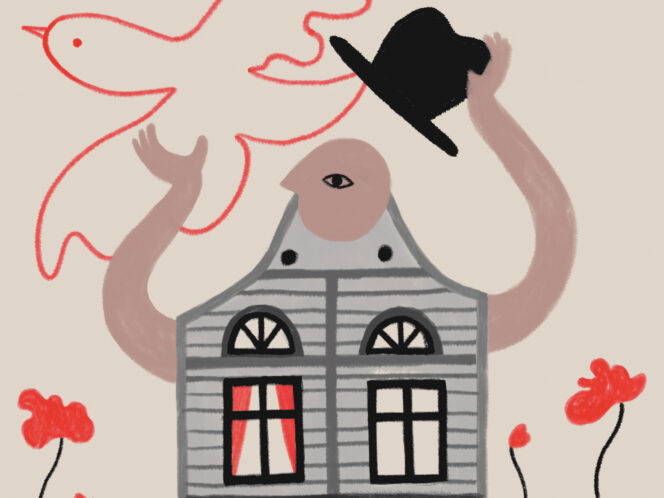
In Kolkata, time seems to spin around, allowing its citizens to avoid the future. Here, poems are still worth more than money and fig trees grow in old bedrooms. The city is slowly succumbing to nature and, one day, will be devoured by it.
“Isn’t this the perfect place to grow old?” Iftekhar ties his black hair in a high ponytail, his eyes glowing with excitement. I tug at the damp linen shirt stuck to my body and look around. We rushed in from the street through a chipped double door, passing the first small courtyard. Now we’re standing beneath the columns surrounding the second, spacious courtyard, currently deluged with streams of warm rain, the kind that falls suddenly and abundantly during the monsoon season. The downpour flows directly onto the marble fountain standing in the middle. It used to be the pride of this house, the centerpiece of the courtyard. Now it serves as a trash can for pots, wooden planks, and all kinds of junk. The city and its people don’t throw away the past. They prefer to hoard and persist. Welcome to the Kolkata time shelter.
“In all sections of the house you could arrange several rooms, each with a balcony. Imagine that! People could live like they did in their youth. Craftsmen, vendors, newspaper sellers would come by. And kids, from the red-light district and the nearby slums close to the river. Old age could be beautiful.” Iftekhar gives me a tour around his imagined nursing home for the elderly, designed to emulate the world of the past. In another city this would be impossible, but in Kolkata you can still tread the old paths. Here, everyday life changes slowly—one may even fail to notice the passing of time. In Hinduism, time is shaped as a wheel, not a straight line. It doesn’t fade away; it comes back and simply is.
Iftekhar’s dream is more than a fantasy. He wipes the screen of his smartphone on his jeans and shows me the business plan. Everything is planned out, split into phases, ready for realization. He needs an investor, as well as the consent of the one remaining owner, the last resident of the main part of the building. This lady lives here alone, almost cut off from the world. She doesn’t venture outside. Her servants bring everything to her. In Kolkata, it’s a typical kind of luxury: to have everything delivered, without the need to expose your body to the elements, dust and smog, noise and crowds. To persist—or perhaps be stuck—behind the arcades of a well-designed house, with a heavy wooden fan rotating overhead. To just be, instead of chasing “tomorrow,” “better,” or “more”. The future and progress do not impress Kolkata, nor its veteran inhabitants. The heir of the mansion, gray-haired and petite, in a worn-out but stylish cotton sari, appears in the window only to slam the shutters. She no longer has any expectations of this world.








